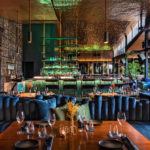Blink twice and it’ll be Christmas before you know it. Not to cause any panic, but we are less than a hundred days away and the days keep on slipping by! Before you know it, every cafe, mall, and cab you wander in and out of will have Christmas songs on repeat, with red faced Santas that call out jolly ho-ho-hos. In between holiday planning and writing up your naughty or nice list, we thought we’d kickstart the Christmas cheer by exploring how we celebrate Christmas here in Asia:
Japan
Besides whizzing down the lovely ski slopes of Niseko and Hakuba, Christmas in culture-rich Japan is celebrated over KFC’s “Christmas Chicken Bucket”. Yes, you read that right. The result of a wildly successful campaign in 1974, “Kurisumasu ni wa kentakkii!”, which translates into Kentucky for Christmas means instead of chowing down on turkey or ham, fried chicken is the annual tradition. In fact, people order their KFC buckets months in advance to avoid the hours-long line!
Also, instead of Santa Claus or Saint Nicholas, the Japanese have “Hoteiosho”, a buddhist monk with a large belly and a sack full of toys. He is described as an old man carrying a big sack with eyes at the back of his head so that he can see children and how they behave without them knowing.
Indonesia

From bamboo fire crackers shot through the night in Flores, to shadow puppets performing the birth of Jesus Christ in Yogyakarta, and ship sirens sounding in Maluku Islands, to celebrating with Keroncong music instead of the typical carols in Northern Jakarta, Indonesia has some of the most diverse ways of celebrating Christmas.
Although Christmas trees are typically of the store bought plastic variety, many get really creative by crafting their own using recyclables and unique materials. In fact, in Bali, some Christmas trees are actually made from chicken feathers! And in something uniquely Balinese, Christians on the Island of the Gods practice Ngejot, an island tradition where Balinese food is cooked and distributed to non-celebrating neighbours to include them.
Read also: A sustainable Christmas doesn’t have to be a boring one. Sonalie Figueiras tells us how
India

India’s biggest Christian population are found in Mumbai, and Goa. Although only a small percentage of the population (only about 2.3%) celebrate the holiday, it’s still a pretty big affair as that works out to approximately 25-million people. The day is celebrated with midnight mass and present-giving like the rest of the world, but instead of traditional fir or pine trees to decorate, Indians celebrate Christmas with decorating banana and mango trees instead!
Also, in Southern India, Christians often put small oil burning clay lamps on the flat roofs of their homes to show their neighbours that Jesus is the light of the world.
Thailand

The religious significance of Christmas isn’t very important in Thailand. A good 90% of the population are Buddhist, however, the Thais live by the principle of Sanuk which roughly translates to enjoy. This also translates to going all out to achieve satisfaction and pleasure in whatever you do. And oh boy, do Thais love to party.
Besides capitalistic Christmas decorations and parties galore, Thailand is probably the only place in the world where you will see elephants dancing on the streets during Christmas. After all, a sense of humour and fun are two of the most important things to pack when you visit Thailand.
Read also: Gorgeous Thai private pool villas for your Christmas holidays






